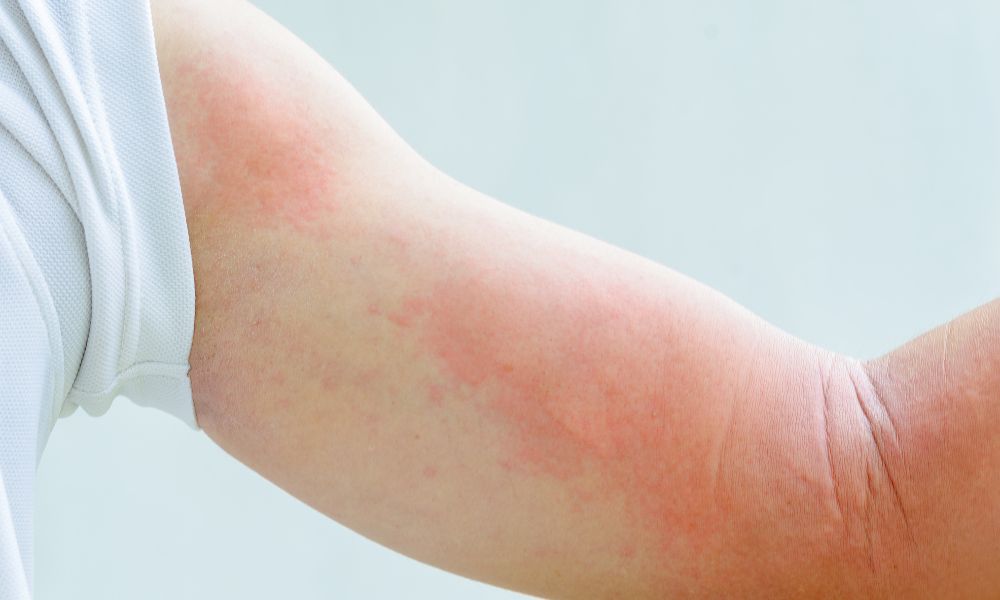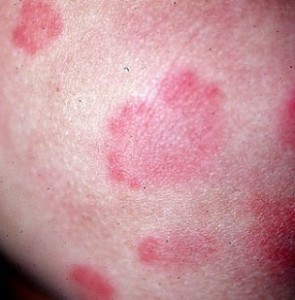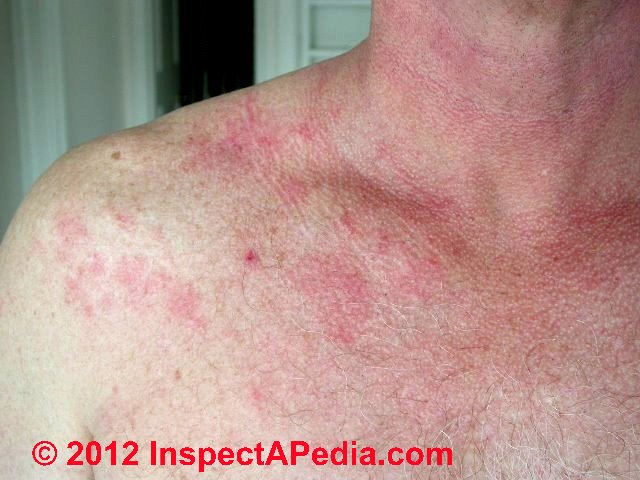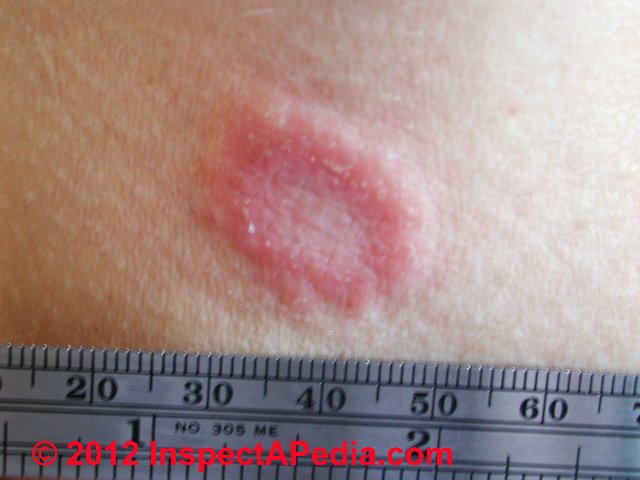Have you ever noticed a rash on your skin and wondered if it could be caused by mold exposure? If so, you’re not alone. Mold can have various effects on our health, and one of those can manifest in the form of a skin reaction. In this article, we will explore the symptoms of mold exposure rash and discuss how you can identify if your skin is reacting to mold. By understanding these signs, you can take the necessary steps to protect yourself and your loved ones from potential health risks associated with mold exposure.
Causes of Mold Exposure
Mold exposure occurs when individuals come into contact with mold spores in their environment. Mold is a type of fungus that thrives in damp and humid conditions, making it a common problem in many homes and buildings. There are several causes of mold exposure, including:
Poor Ventilation
Insufficient ventilation in the home can lead to increased moisture levels, creating an ideal environment for mold growth. Without proper air circulation, humid air can become trapped, causing mold spores to multiply and spread.
Water Leaks
Leaking pipes, roofs, or windows can introduce excess moisture into your home, providing the perfect breeding ground for mold. If left unaddressed, these water leaks can lead to significant mold growth and subsequent exposure.
High Humidity
Areas with high humidity levels, such as bathrooms and basements, are particularly susceptible to mold growth. The excess moisture in the air creates a favorable habitat for mold spores, increasing the risk of exposure.
Flooding
When a home experiences flooding, whether from natural disasters or plumbing issues, it can create an ideal environment for mold to grow. Standing water and damp materials allow mold spores to thrive, leading to potential mold exposure for residents.
Types of Mold Rash
Mold rash refers to the skin reactions that occur as a result of mold exposure. There are several types of mold rash, each with its own distinct characteristics. These include:
Allergic Contact Dermatitis
This type of rash occurs when the skin comes into direct contact with mold spores, triggering an allergic reaction. Symptoms may include redness, itching, and swelling at the site of exposure.
Irritant Contact Dermatitis
Unlike allergic contact dermatitis, irritant contact dermatitis is not an allergic reaction, but rather a physical irritation of the skin. It can be caused by direct contact with mold spores or exposure to substances produced by mold, such as mycotoxins. Symptoms include redness, blistering, and scaling of the affected area.
Atopic Dermatitis
Atopic dermatitis, also known as eczema, is a chronic skin condition characterized by dry, itchy, and inflamed patches. While mold exposure can exacerbate symptoms in individuals with pre-existing atopic dermatitis, it can also trigger new cases in those not previously affected.
Fungal Infections
In some cases, mold exposure can lead to fungal infections of the skin. These infections, such as tinea corporis (ringworm) or candidiasis, can cause itchy, red, and scaly patches on the skin. Fungal infections require medical treatment to prevent them from spreading and causing further complications.

Common Symptoms of Mold Rash
When exposed to mold, individuals may experience a range of symptoms that indicate the presence of a mold rash. These symptoms can vary depending on the type of rash and the individual’s sensitivity to mold spores. Common symptoms of mold rash include:
- Redness and inflammation of the skin
- Itching and discomfort
- Swelling and blistering
- Dry, scaly, or peeling skin
- Rash that may develop into hives or welts
- Burning or stinging sensations
It is essential to note that these symptoms can manifest immediately after exposure or take several hours or even days to appear. If you suspect that your symptoms are related to mold exposure, it is advisable to consult a medical professional for an accurate diagnosis and appropriate treatment.
Specific Skin Reactions to Mold Exposure
Depending on the type of mold rash and individual sensitivity, different skin reactions can occur following mold exposure. These reactions can help in identifying the specific cause and severity of the mold rash. Some common skin reactions to mold exposure include:
Wheals
Wheals are elevated, itchy, and often red bumps that appear on the skin. They can vary in size and may be accompanied by a burning or stinging sensation. Wheals typically fade within hours but can reappear in response to continued mold exposure.
Bullae
Bullae are larger fluid-filled blisters that can form on the skin following mold exposure. These blisters may be painful or itchy and are generally a sign of a more severe skin reaction.
Papules
Papules are small, raised bumps that can appear on the skin during a mold rash. They are usually itchy and may be red or pink in color. Papules often cluster together and can create a patchy or spotted appearance on the skin.
Erythema
Erythema refers to the reddening or inflammation of the skin, which can occur due to mold exposure. It can be a widespread reaction across large areas of skin or localized to specific patches. Erythema may be accompanied by itching, burning, or pain.

Allergic Reactions
One common type of skin reaction to mold exposure is an allergic reaction. Individuals who are allergic to mold may experience symptoms such as:
- Sneezing and congestion
- Itchy, watery eyes
- Coughing and wheezing
- Runny or stuffy nose
- Headaches
- Fatigue
These symptoms can occur in addition to, or instead of, skin reactions. Allergic reactions to mold can vary in severity, with some individuals experiencing minor discomfort while others may have more severe respiratory symptoms. If you suspect mold allergies, it is crucial to seek medical advice to manage symptoms effectively and minimize exposure risks.
Irritant Contact Dermatitis
Irritant contact dermatitis is a physical irritation of the skin that can occur when in direct contact with mold spores or mold-produced substances. Some common symptoms of irritant contact dermatitis include:
- Redness and inflammation
- Burning or stinging sensations
- Blistering or crusting of the skin
- Dry or cracked skin
- Itching or discomfort
Unlike allergic reactions, irritant contact dermatitis does not involve an immune response. It typically occurs due to prolonged or repeated exposure to mold or mold-related substances. To prevent further irritation, it is important to identify the source of mold exposure and take appropriate measures to remove it from your environment.

Atopic Dermatitis
Individuals with pre-existing atopic dermatitis, also known as eczema, may experience worsened symptoms when exposed to mold. Atopic dermatitis is a chronic condition characterized by dry, itchy, and inflamed skin. Mold exposure can trigger flare-ups and make the existing symptoms more severe. Managing atopic dermatitis involves avoiding triggers such as mold, keeping the skin well-moisturized, and using prescribed medications or topical treatments as recommended by a healthcare professional.
Fungal Infections
Mold exposure can sometimes lead to fungal infections of the skin. These infections can occur when mold spores enter small breaks or openings in the skin’s barrier. Common fungal infections associated with mold exposure include tinea corporis (ringworm) and candidiasis. Symptoms of fungal infections can include:
- Red, itchy, and scaly patches on the skin
- Circular or ring-shaped rashes
- Swelling and discomfort
- Peeling or cracking skin
It is important to seek medical attention if you suspect a fungal infection, as these conditions often require antifungal treatment to resolve.

Other Potential Symptoms
Apart from skin reactions, mold exposure can lead to a variety of other symptoms. These symptoms can vary depending on individual sensitivity and the extent of mold exposure. Some potential symptoms of mold exposure include:
- Respiratory issues such as coughing, wheezing, and shortness of breath
- Sinus congestion, sneezing, and sore throat
- Fatigue and headaches
- Neurological symptoms such as memory problems and difficulty concentrating
- A general feeling of malaise or unexplained illness
If you are experiencing any of these symptoms and suspect mold exposure as the cause, it is important to consult with a healthcare professional who can assess your condition and provide appropriate guidance.
Removing Mold from Your Environment
To minimize the risk of mold exposure and associated skin reactions, it is important to take proactive steps to remove mold from your environment. Some measures you can take include:
-
Identify and address the source of moisture or water leaks in your home. Repair any plumbing issues or leaks promptly to prevent mold growth.
-
Improve ventilation in areas prone to moisture, such as bathrooms or basements. Use exhaust fans or open windows to allow proper air circulation and reduce humidity levels.
-
Clean and dry any areas affected by mold promptly and thoroughly. Use appropriate cleaning solutions or seek professional help for extensive mold growth.
-
Use dehumidifiers and air purifiers to reduce humidity levels and filter out mold spores from the air.
-
Keep your living spaces clean and well-maintained, regularly checking for signs of mold growth.
-
When working with mold or cleaning up moldy areas, wear protective clothing, gloves, and a mask to minimize exposure to mold spores.
Remember that mold remediation can be a complex process, and it may be necessary to consult professionals for extensive or persistent mold issues in your home.
By understanding the causes of mold exposure, types of mold rash, common symptoms, and appropriate steps to remove mold from your environment, you can take control of your health and create a safer living space for you and your loved ones.
